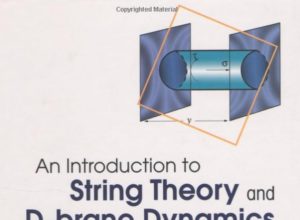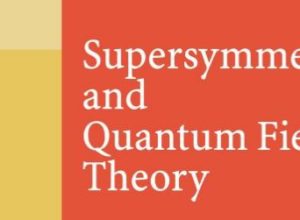I last introduced T-branes, which are non-Abelian deformation of intersecting D-brane systems in the corresponding compactification manifold. Then I showed that we have a Kähler-equivalence of the derivatives in the pull-back with the gauge-covariant ones, which gave us:
![]()
![]()
with ![]() the inclusion of the complex Higgs field
the inclusion of the complex Higgs field ![]() , and
, and ![]() representing the symmetrization over gauge indices.
representing the symmetrization over gauge indices.
Locally, the Higgs field is given by:
![]()
where ![]() is a matrix in the complexified adjoint representation of
is a matrix in the complexified adjoint representation of ![]() and
and ![]() its Hermitian conjugate. Thus, I could derive:
its Hermitian conjugate. Thus, I could derive:
![]()
with:
![]()
a Kähler coordinate expansion of ![]() and gives us, after inserting it in:
and gives us, after inserting it in:
![]()
the following:
![]()
which is the exact 7-brane superpotential for F-theory and the integrand is independent of  , entailing that the F-term conditions are purely topological and in no need for
, entailing that the F-term conditions are purely topological and in no need for  -corrections
-corrections
Aside: the book on the post cover is excellent.
However, the D-term in:
![]()
is in need of ![]() -corrections, since it is evaluable as:
-corrections, since it is evaluable as:
![Rendered by QuickLaTeX.com \[\begin{array}{l}D = \int_{\tilde S} {S\left\{ {\lambda P\left[ J \right]} \right.} \wedge F - \frac{{i\lambda }}{6}{\iota _\Phi }{\iota _\Phi }{J^3} + \\\frac{{i{\lambda ^3}}}{2}{\iota _\Phi }{\iota _\Phi }J \wedge F \wedge F - {\rm{P}}\left[ {J \wedge B} \right] \wedge F\\\left. { + i{\lambda ^2}{\iota _\Phi }{\iota _\Phi }\left( {J \wedge B} \right) \wedge \frac{{i\lambda }}{2}{\iota _\Phi }{\iota _\Phi }\left( {J \wedge {B^2}} \right)} \right\}\end{array}\]](https://www.georgeshiber.com/wp-content/ql-cache/quicklatex.com-c8d76593dca97fc746a95bd9f07f823d_l3.png)
and the non-Abelian D-term has the form:
![]()
In the local patch on the C-manifold, one takes the flat-space Kähler-form as having the form:
![Rendered by QuickLaTeX.com \[J = \underbrace {\frac{i}{2}{\rm{d}}x \wedge {\rm{d}}\bar x + \frac{i}{2}{\rm{d}}x \wedge {\rm{d}}\bar y}_{ = :\omega } + 2i{\rm{d}}z \wedge {\rm{d}}\bar z\]](https://www.georgeshiber.com/wp-content/ql-cache/quicklatex.com-719e7d63efe47a17c5e22d2b783d44d4_l3.png)
Then, we decompose the Kähler-background B-field as:
![]()
with:
![]()
thus giving us:
![Rendered by QuickLaTeX.com \[\begin{array}{l}D = \int_{\tilde S} {S\left\{ {\rm{P}} \right.} \left[ J \right] \wedge \tilde F + \frac{{i\lambda }}{2}\left( {{\iota _\Phi }{\iota _\Phi }J} \right)\\ - \left( {{{\tilde F}^2} - {\omega ^2}} \right) - i\lambda \left( {{\iota _\Phi }{\iota _\Phi }B} \right)\omega \wedge \tilde F\\ - \omega \wedge {\rm{P}}\left[ {{B_{z\overline z }}{\rm{d}}z \wedge {\rm{d}}\bar z} \right]\end{array}\]](https://www.georgeshiber.com/wp-content/ql-cache/quicklatex.com-a0fe25124bde774846e7c3141c746fd2_l3.png)
with the Abelian pull-back ![]() to
to ![]() as determined by:
as determined by:
![Rendered by QuickLaTeX.com \[J = \underbrace {\frac{i}{2}{\rm{d}}x \wedge {\rm{d}}\bar x + \frac{i}{2}{\rm{d}}x \wedge {\rm{d}}\bar y}_{ = :\omega } + 2i{\rm{d}}z \wedge {\rm{d}}\bar z\]](https://www.georgeshiber.com/wp-content/ql-cache/quicklatex.com-719e7d63efe47a17c5e22d2b783d44d4_l3.png)
Hence we have:
![]()
Now: realize that ![]() is a zero-form and
is a zero-form and ![]() does not have transverse-legs to
does not have transverse-legs to ![]() , and thus the pull-back
, and thus the pull-back ![]() has a trivial action. So, after solving:
has a trivial action. So, after solving:
![]()
the D-term equations amount to ![]() with:
with:
![Rendered by QuickLaTeX.com \[\begin{array}{l}D = \int_{\tilde S} {S\left\{ {\omega \wedge \tilde F} \right.} + {\lambda ^2}{\rm{D}}\phi \wedge \overline {{\rm{D}}\phi } \\ \wedge \left( {2i\tilde F - {B_{z\overline z }}\omega } \right) + \lambda \left[ {\phi ,\bar \phi } \right]\\\left. {\left( {{\omega ^2} - {{\tilde F}^2} - i{B_{z\overline z }}\omega \wedge \tilde F} \right)} \right\}\end{array}\]](https://www.georgeshiber.com/wp-content/ql-cache/quicklatex.com-92ef74f7300fefeb087fd6471cca8ad1_l3.png)
and with the ![]() -field vanishing on the sheave of the C-manifold, one gets a reduction to:
-field vanishing on the sheave of the C-manifold, one gets a reduction to:
![]()
which yields a non-Abelian  -corrected Chern-Simons action of a stack of D7-branes with both terms at leading order in
-corrected Chern-Simons action of a stack of D7-branes with both terms at leading order in 
entailing that for matrix algebras:
![]()
they are the matrix products in the fundamental representation of 
and so the ![]() -corrections on D-terms with the gauge flux F diagonalization yields
-corrections on D-terms with the gauge flux F diagonalization yields
the D-term equations
![]()
Deep upshot: the  -corrections are given entirely by the abelian pull-back of the Kähler-form
-corrections are given entirely by the abelian pull-back of the Kähler-form  to
to 
![]()
And this has a deep physical interpretation which can be extracted from: ‘The energy-momentum tensor and D-term of Q-clouds‘.




1 Response
Deriving 4D De Sitter Space from T-Branes via D7-Brane Action
Friday, December 16, 2016[…] thus matching the dS vacuum 4D effective action as factored in the T-brane worldvolume, as I derived it here: […]